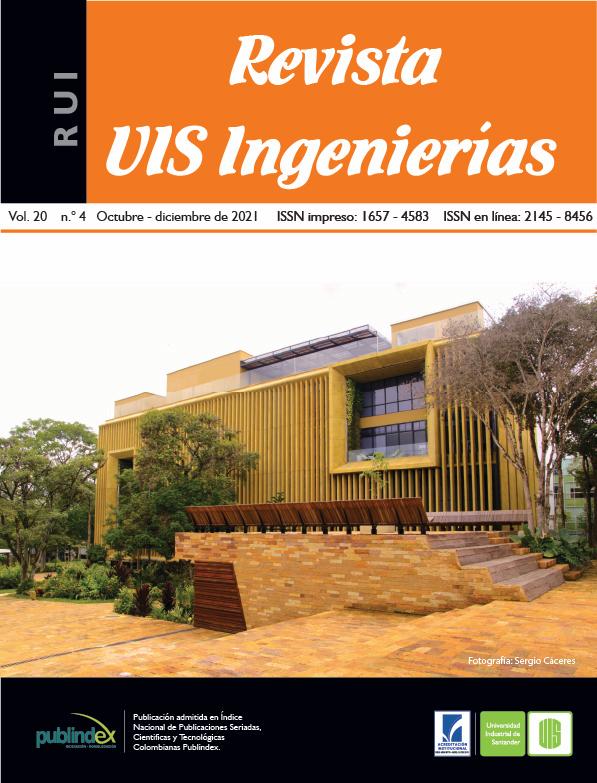Published 2021-08-03
Keywords
- warehouse management system,
- system dynamic,
- inventory control,
- logistics,
- hardware store
- logistics costs,
- decision,
- WMS ...More
How to Cite
Abstract
representation in the logistics costs of a company. Therefore, any decision made to increase productivity and decrease delivery time is needed. The execution of these operations is relevant to senior management and its implementation must be analyzed with a long-term financial sustainability of the strategy in mind. This study evaluates the economic impact of a warehouse management tool implementation (also known as WMS) in a company dedicated to the distribution of retail and wholesale hardware items. With the help of the dynamic systems tool, it is possible to evaluate the effect generated by the implementation of the project, considering the variables that directly and indirectly affect the cash flow of the company under study. Through the simulation carried out, it is possible to conclude that the warehouse management project has increase the company's cash flow in a period of five years. However, the results are only valid if senior management agrees to strengthen employee training processes and make a greater investment in technology that allows for faster and more efficient logistics processes.
Downloads
References
[2] R. Martins, M. T. Pereira, L. P. Ferreira, J. C. Sá, F. J. G. Silva, “Warehouse operations logistics improvement in a cork stopper factory”, Procedia Manuf., vol. 51, no. 2020, pp. 1723-1729, 2020, doi: 10.1016/j.promfg.2020.10.240.
[3] S. Alyahya, Q. Wang, N. Bennett, “Application and integration of an RFID-enabled warehousing management system – a feasibility study”, J. Ind. Inf. Integr., vol. 4, pp. 15-25, 2016, doi: 10.1016/j.jii.2016.08.001.
[4] B. Sai Subrahmanya Tejesh, S. Neeraja, “Warehouse inventory management system using IoT and open source framework”, Alexandria Eng. J., vol. 57, no. 4, pp. 3817-3823, 2018, doi: 10.1016/j.aej.2018.02.003.
[5] J. Y. Shiau, M. C. Lee, “A warehouse management system with sequential picking for multi-container deliveries”, Comput. Ind. Eng., vol. 58, no. 3, pp. 382-392, 2010, doi: 10.1016/j.cie.2009.04.017.
[6] A. M. Atieh et al., “Performance Improvement of Inventory Management System Processes by an Automated Warehouse Management System”, Procedia CIRP, vol. 41, pp. 568-572, 2016, doi: https://doi.org/10.1016/j.procir.2015.12.122.
[7] M. Torabizadeh, N. M. Yusof, A. Ma’aram, A. M. Shaharoun, “Identifying sustainable warehouse management system indicators and proposing new weighting method”, J. Clean. Prod., vol. 248, pp. 119190, 2020, doi: 10.1016/j.jclepro.2019.119190.
[8] V. Lototsky, R. Sabitov, G. Smirnova, B. Sirazetdinov, N. Elizarova, S. Sabitov, “Model of the automated warehouse management and forecasting system in the conditions of transition to industry 4.0”, IFAC-PapersOnLine, vol. 52, no. 13, pp. 78-82, 2019, doi: 10.1016/j.ifacol.2019.11.137.
[9] J. Aracil y F. Gordilllo, Dinámica de sistemas. Madrid, España: Alianza Editorial, 1997.
[10] Ferretería y Bricolaje, “Los inventarios son necesarios y fáciles,” 2015.
[11] A. A. Correa Espinal, R. A. Gómez Montoya, J. A. Cano Arenas, “Gestión de almacenes y Tecnologías de la Información y Comunicación (TIC)”, Estud. Gerenciales, vol. 26, no. 117, pp. 145, 2010, doi: 10.1016/S0123-5923(10)70139-X.
[12] M. Schaffernicht, Indagación de situaciones dinámicas mediante la Dinámica de sistemas. Chile: Universidad de Talca, 2006.
[13] S. Peña Escobar, G. S. Ramírez Reyes, J. C. Osorio Gómez, “Evaluación de una estrategia de fidelización de clientes con dinámica de sistemas”, Rev. Ing. Univ. Medellín, vol. 14, no. 26, pp. 87-104, 2015, doi: 10.22395/rium.v14n26a6.
[14] A. M. Paredes, A. F. Salazar, “Visión sistémica del análisis de la flexibilidad en cadenas de suministro de productos perecederos”, Sist. Telemàtica, vol. 12, no. 6, pp. 63-86, 2014, doi: 10.18046/syt.v12i30.1858.
[15] A. M. Paredes Rodríguez, A. F. Salazar Ramos, “Systemic Evaluation of a Policy of Volume Flexibility in a Papaya Distribution Supply Chain”, Rev. EIA, vol. 14, no. 27, pp. 43-62, 2018, doi: 10.24050/reia.v14i27.865.
[16] T. Marandure, K. Dzama, J. Bennett, G. Makombe, C. Mapiye, “Application of system dynamics modelling in evaluating sustainability of low-input ruminant farming systems in Eastern Cape Province, South Africa”, Ecol. Modell., vol. 438, pp. 109294, 2020, doi: 10.1016/j.ecolmodel.2020.109294.
[17] E. Jiménez, L. Reclade, M. Silva, “Visión Comparativa Entre Redes De Petri Continuas Y Diagramas De Forrester”, en Jornadas de automática vol. 2, 2014, pp. 1-8.
[18] G. Herrera Vidal, Simulación de sistemas discretos: un enfoque industrial. Bogota, Colombia: Alfaomega, 2020.
[19] P. Medina, E. Cruz, R. Gómez, “Selección de proveedor de WMS utilizando método AHP”, Sci. Tech., vol. 17, no. 52, pp. 65-72, 2012.


